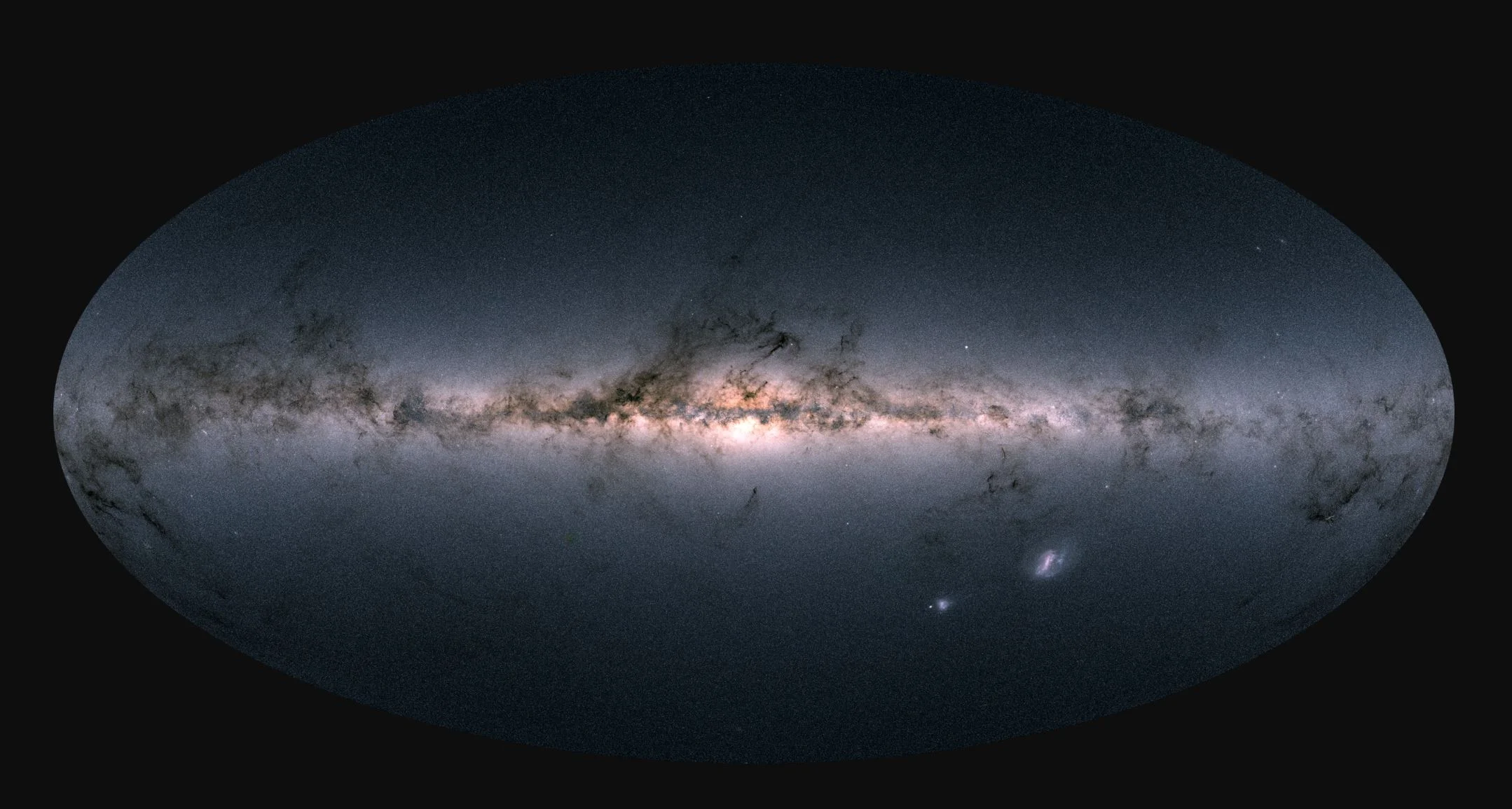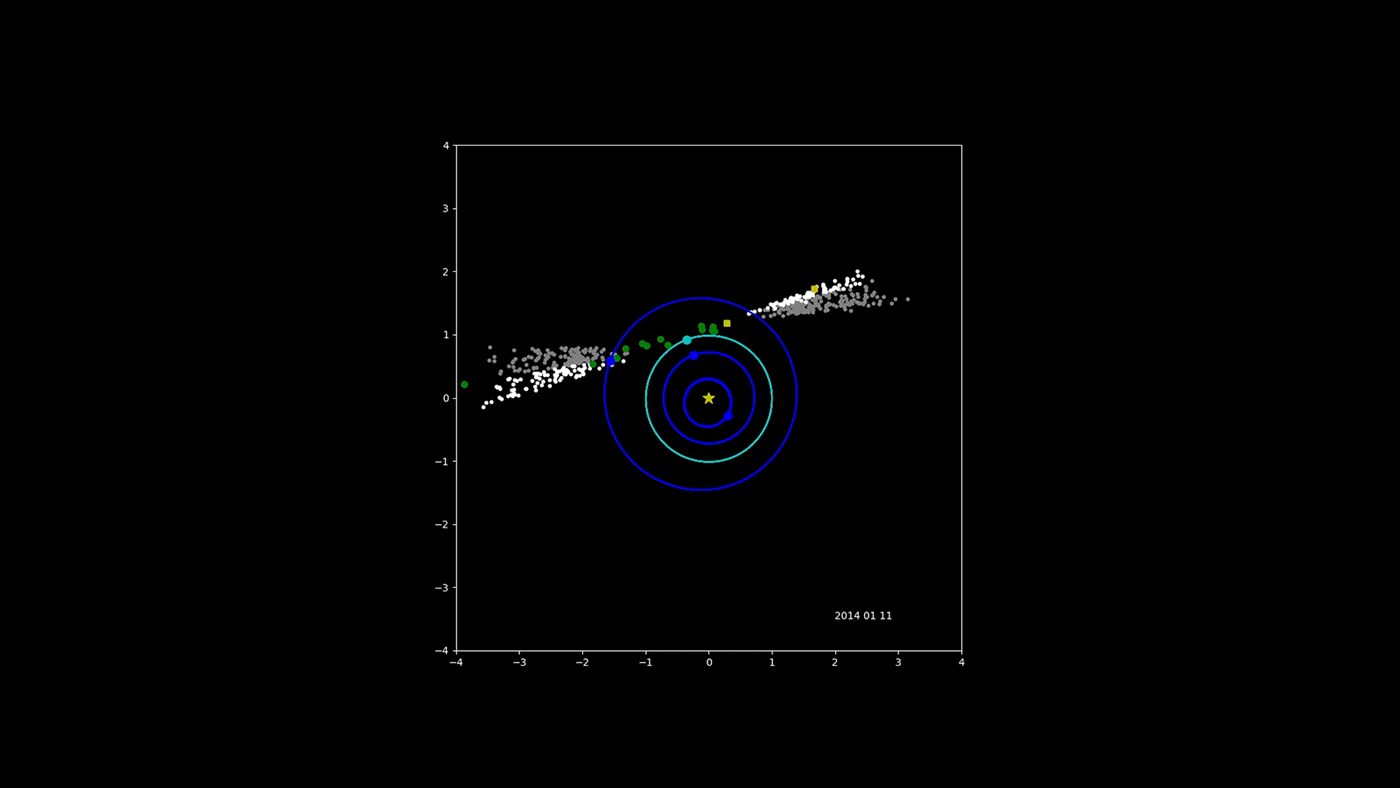Cancer is the leading cause of death in the world. It occurs when mutations in our cells lead to unchecked growth. But what if we could engineer biological cells to fight back?
Want to eat better? You might be able to train yourself to change your tastes
Elements from the stars: The unexpected discovery that upended astrophysics 66 years ago
Ancient Galaxy Megamergers - ALMA and APEX discover massive conglomerations of forming galaxies in early Universe
Scientists discover how to harness the power of quantum spookiness by entangling clouds of atoms
Gaia mission releases map of more than a billion stars – here’s what it can teach us
Most of us have looked up at the night sky and wondered how far away the stars are or in what direction they are moving. The truth is, scientists don’t know the exact positions or velocities of the vast majority of the stars in the Milky Way. But now a new tranche of data from the European Space Agency’s Gaia satellite, aiming to map stars in our galaxy in unprecedented detail, has come in to shed light on the issue.
How many planets is TESS going to find?
The Transiting Exoplanet Survey Satellite (TESS), NASA’s latest exoplanet-hunting space telescope, was launched into space on Wednesday, April 18th, 2018. As the name suggests, this telescope will use the Transit Method to detect terrestrial-mass planets (i.e. rocky) orbiting distant stars. Alongside other next-generation telescopes like the James Webb Space Telescope (JWST), TESS will effectively pick up where telescopes like Hubble and Kepler left off.
End of ageing and cancer? Scientists unveil structure of the ‘immortality’ enzyme telomerase
Making a drug is like trying to pick a lock at the molecular level. There are two ways in which you can proceed. You can try thousands of different keys at random, hopefully finding one that fits. The pharmaceutical industry does this all the time – sometimes screening hundreds of thousands of compounds to see if they interact with a certain enzyme or protein. But unfortunately it’s not always efficient – there are more drug molecule shapes than seconds have passed since the beginning of the universe.
Stellar Dust Survey Paves Way for Exoplanet Missions
Veils of dust wrapped around distant stars could make it difficult for scientists to find potentially habitable planets in those star systems. The Hunt for Observable Signatures of Terrestrial Systems, or HOSTS, survey was tasked with learning more about the effect of dust on the search for new worlds. The goal is to help guide the design of future planet-hunting missions. In a new paper published in the Astrophysical Journal, HOSTS scientists report on the survey’s initial findings.
Two Hubble Views of the Same Stellar Nursery
NASA's NEOWISE Asteroid-Hunter Spacecraft -- Four Years of Data
NASA's Near-Earth Object Wide-field Infrared Survey Explorer (NEOWISE) mission has released its fourth year of survey data. Since the mission was restarted in December 2013, after a period of hibernation, the asteroid- and comet-hunter has completely scanned the skies nearly eight times and has observed and characterized 29,375 objects in four years of operations. This total includes 788 near-Earth objects and 136 comets since the mission restart.
Health Check: is there an optimal time of day to work out?
Delivering VR in perfect focus with nanostructure meta-lenses
If wearing a virtual reality or augmented reality headset is ever to become commonplace, hardware manufacturers will need to figure out how to make the devices small and lightweight while ensuring their images are sharp and clear. Unfortunately, this task faces a key limitation in optics: Conventional lenses are curved glass objects that focus different wavelengths of light in different locations, which would show viewers blurry images. As a result, pretty much anything with a lens – from tiny smartphone cameras to large-scale projectors – uses multiple lenses, which add weight, thickness and complexity, increasing cost.
The challenges of an alien spaceflight program: escaping super earths and red dwarf stars
Since the beginning of the Space Age, humans have relied on chemical rockets to get into space. While this method is certainly effective, it is also very expensive and requires a considerable amount of resources. As we look to more efficient means of getting out into space, one has to wonder if similarly-advanced species on other planets (where conditions would be different) would rely on similar methods.
Mysterious red spots on Mercury get names – but what are they?
Mercury is the closest planet to the sun, but far from being a dull cinder of a world, it has instead turned out to be a real eye opener for geologists. Among the revelations by NASA’s MESSENGER probe, which first flew past Mercury in 2008 and orbited it between 2011 and 2015, is the discovery of a hundred or so bright red spots scattered across the globe. Now they are at last being named.
Did you know the earth has a second magnetic field? Its oceans
Earth’s magnetic field is one of the most mysterious features of our planet. It is also essential to life as we know it, ensuring that our atmosphere is not stripped away by solar wind and shielding life on Earth from harmful radiation. For some time, scientists have theorized that it is the result of a dynamo action in our core, where the liquid outer core revolves around the solid inner core and in the opposite direction of the Earth’s rotation.















